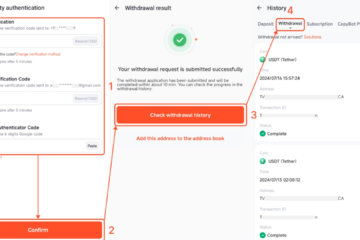Blockchain technology has changed how we think about trust, security, and decentralization in digital systems. At the heart of every blockchain lies a consensus mechanism, a set of rules that ensures all participants in the network agree on the state of the blockchain. One popular consensus mechanism is Delegated Proof of Stake, often called DPoS.
What is DPoS?
DPoS stands for Delegated Proof of Stake. It’s a way for a blockchain network to agree on which transactions are valid and should be added to the blockchain. Think of it like a group of people voting for a few trusted leaders to make decisions for everyone. In DPoS, the community selects a small group of “delegates” to validate transactions and maintain the blockchain.
Unlike traditional systems where a central authority (like a bank) controls everything, DPoS is decentralized. It relies on the community to choose delegates who act in the best interest of the network. This makes DPoS fast, efficient, and scalable, which is why many blockchains use it.
How Does the DPoS Consensus Mechanism Work?
To understand the DPoS consensus mechanism, let’s break it down step by step:
-
Stakeholders and Voting
In a DPoS system, anyone who owns the blockchain’s cryptocurrency (called tokens) is a stakeholder. These stakeholders have the power to vote for delegates. The more tokens you hold, the more voting power you have. This is called “proof of stake” because your stake (the number of tokens you own) determines your influence.
Stakeholders don’t vote on every transaction. Instead, they vote to choose delegates who will handle the work of validating transactions and creating new blocks.
-
Electing Delegates
Delegates are individuals or entities responsible for running the blockchain. They operate nodes (computers) that process transactions and add them to the blockchain. The number of delegates varies depending on the blockchain, but it’s usually a small group, like 21 or 101.
The election process is continuous. Stakeholders can vote for delegates at any time, and if a delegate isn’t performing well, they can be voted out. This keeps delegates accountable to the community.
-
Block Production
Once elected, delegates take turns creating new blocks. A block is a group of transactions bundled together and added to the blockchain. Each delegate gets a short time slot to produce a block. For example, if there are 21 delegates, each one might produce a block every few seconds.
Because only a small number of trusted delegates produce blocks, the process is much faster than other consensus mechanisms, like Proof of Work (used by Bitcoin).
-
Rewards
Delegates are rewarded for their work with tokens. These rewards come from transaction fees or newly created tokens (depending on the blockchain). Some blockchains allow delegates to share rewards with the stakeholders who voted for them, encouraging more people to participate in voting.
-
Security and Trust
DPoS relies on trust in elected delegates. If a delegate tries to cheat or act dishonestly, the community can quickly vote them out. This creates a system where delegates are motivated to act responsibly. Additionally, the blockchain’s code ensures that invalid transactions are rejected, so the system remains secure.
Why is DPoS Important?
The DPoS consensus mechanism solves several problems that older blockchain systems, like Bitcoin’s Proof of Work, face. Here are some key benefits:
-
Speed
DPoS is incredibly fast. Because only a small number of delegates validate transactions, the blockchain can process thousands of transactions per second. For comparison, Bitcoin processes about 7 transactions per second, while DPoS blockchains like EOS or TRON can handle thousands.
-
Energy Efficiency
Proof of Work requires massive amounts of electricity because miners compete to solve complex math problems. DPoS, on the other hand, doesn’t need this competition. Delegates simply validate transactions, which uses far less energy. This makes DPoS environmentally friendly.
-
Decentralization with Efficiency
DPoS strikes a balance between decentralization and efficiency. While it’s not as decentralized as Proof of Work (where anyone can mine), it’s still decentralized because stakeholders choose delegates. This allows DPoS to maintain security and trust without sacrificing speed.
-
Community Involvement
DPoS encourages community participation. Anyone with tokens can vote for delegates, giving users a say in how the blockchain is run. This creates a sense of ownership and ensures the network reflects the community’s values.
-
Delegated Proof-of-Stake Scalability
One of the biggest challenges in blockchain technology is scalability. Scalability refers to a blockchain’s ability to handle a large number of transactions quickly and cheaply as the network grows. Many blockchains struggle with this. For example, Ethereum (before its upgrades) often faced high fees and slow transaction times during periods of heavy use.
DPoS is designed with scalability in mind. Here’s how it achieves delegated proof-of-stake scalability:
-
Fewer Validators
In DPoS, only a small number of delegates validate transactions. This reduces the amount of communication and computation needed to reach consensus. As a result, DPoS blockchains can process transactions much faster than systems where every node validates every transaction.
-
High Transaction Throughput
Because of its streamlined process, DPoS can handle thousands of transactions per second. This makes it ideal for applications like decentralized finance (DeFi), gaming, and social media platforms, where users expect fast and seamless interactions.
-
Low Fees
With fewer validators and faster processing, DPoS blockchains often have lower transaction fees. This makes them more accessible to users and developers, especially for small transactions.
-
Flexibility
DPoS blockchains can adjust the number of delegates or tweak other parameters to improve performance as the network grows. This flexibility ensures the system remains scalable even as more users join.
-
Real-World Applications
Many DPoS blockchains are built to support real-world applications. For example, EOS focuses on decentralized apps (dApps), while TRON supports content-sharing platforms. The scalability of DPoS makes it possible for these platforms to handle millions of users without slowing down.
Examples of DPoS Blockchains
Several well-known blockchains use the DPoS consensus mechanism. Here are a few examples:
- EOS: EOS is designed for decentralized applications. It uses DPoS to achieve high scalability, allowing developers to build fast and user-friendly dApps.
- TRON: TRON focuses on content creation and sharing. Its DPoS system enables fast transactions, making it ideal for micropayments and digital content platforms.
- Lisk: Lisk uses DPoS to make blockchain development accessible. It allows developers to create their own sidechains linked to the main Lisk blockchain.
- BitShares: BitShares is a financial platform that uses DPoS to process transactions quickly and securely.
Each of these blockchains tailors DPoS to its specific needs, but they all benefit from the speed and scalability of the DPoS consensus mechanism.
Challenges of DPoS
While DPoS has many advantages, it’s not perfect. Here are some challenges:
- Centralization Concerns
Because DPoS relies on a small number of delegates, some people argue it’s less decentralized than other systems. If a few delegates control the network, they could potentially collude or act against the community’s interests. However, delve solves this by allowing stakeholders to vote out bad actors.
- Voter Apathy
In some DPoS systems, many stakeholders don’t bother voting. This can lead to low participation and allow a small group of token holders to dominate the delegate election process. Encouraging more people to vote is an ongoing challenge.
- Wealth Concentration
Since voting power depends on the number of tokens held, wealthy stakeholders have more influence. This can create an uneven playing field, where only those with large token holdings shape the network’s future. Some blockchains address this by rewarding voters or limiting the impact of large token holders.
- Delegate Accountability
Delegates must act honestly and efficiently, but there’s always a risk of incompetence or corruption. The community needs to stay vigilant and vote out underperforming delegates quickly.
Despite these challenges, many DPoS blockchains have found ways to address them, such as improving voter incentives or adding checks and balances to ensure fairness.
The Bottom Line
Delegated Proof of Stake (DPoS) is a powerful consensus mechanism that makes blockchains fast, efficient, and scalable. By allowing stakeholders to elect trusted delegates, DPoS balances decentralization with performance, enabling thousands of transactions per second with low fees. Its scalability makes it ideal for real-world applications like DeFi, gaming, and content platforms. Blockchain Customer Service Number




